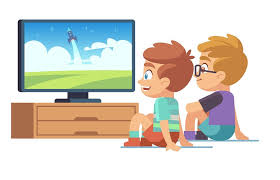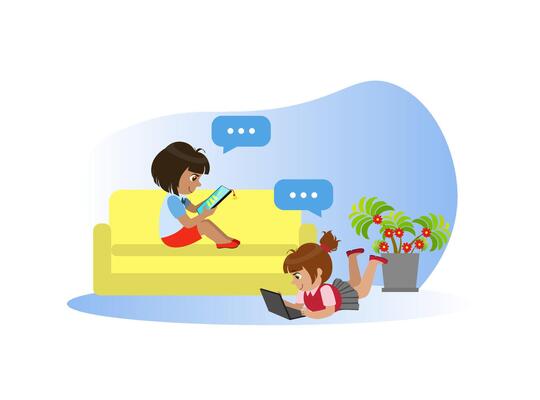Digital devices are everywhere—from smartboards in first grade to tablets in toddlers’ laps. Screen time for young students is no longer a fringe issue; it’s core to how kids learn, play, and connect. Below, you’ll find the most up-to-date research, global guidelines, and 12 concrete strategies to keep screens a servant—not a master—of childhood.

1. Digital Childhood: How Much Screen Time Are Kids Really Getting?
1.1 Global Usage Trends in 2025
Surveys in North America, Europe, and Asia show elementary-age children now average 3–4 hours of recreational screen use daily, up 30 % since pre-pandemic times. Many 8-year-olds already own smartphones, and nearly all classrooms employ tablets at least weekly for instruction. Verywell Health
1.2 Pandemic After-Effects on Device Habits
Lockdowns normalized e-learning, but they also blurred “school” and “fun” screens. Researchers found that weekend entertainment use surged, while weekday viewing tilted toward educational content—yet both predicted higher BMI and lower physical activity overall. CHOC – Children’s health hub
2. Developmental Impact on Growing Brains
2.1 Attention, Memory & Executive Function
Excessive multitasking on multiple apps can fragment attention spans. MRI studies link heavy screen exposure (≥7 h/day) to thinner prefrontal cortex regions responsible for impulse control. Shorter exposures still matter: simply having a TV on in the background reduces toddlers’ executive-function test scores. PMC
2.1.1 The “Background TV” Problem
Even when kids “aren’t watching,” background media can disrupt parent-child conversation counts by up to 25 %, stunting language growth. Tip: keep news or sitcoms off while children play or eat.
2.2 Language & Early Literacy
Interactive story apps outperform passive video when a caregiver co-reads aloud. But if the device replaces human narration entirely, vocabulary gains stall. Balance is key.
2.3 Social-Emotional Skills & Empathy
Face-to-face play teaches tone of voice and body language—signals flat screens can’t fully replicate. Studies tie more than 2 h/day of non-educational screen time to lower empathy scores and higher irritability in primary school. CHOC – Children’s health hub
3. Physical Health Matters
3.1 Vision, Eye Strain & “Digital Dry Eye”

Staring at a screen halves blink rate, leading to dry-eye symptoms. Encourage the 20-20-20 rule: every 20 minutes, look 20 feet away for 20 seconds.
3.2 Sleep Cycles & Blue-Light Exposure
Blue-light suppresses melatonin. Kids who watch videos within one hour of bedtime fall asleep 30 minutes later on average and wake more at night. A strict “no-screens-after-dinner” rule improves sleep quality within a week. Verywell Health
3.3 Posture, Movement & Childhood Obesity
Sedentary screen habits correlate with higher BMI. Two-plus hours daily raise overweight risk by 42 %. Standing desks, stretch alarms, and outdoor recess block creeping weight gain. CHOC – Children’s health hub
4. Latest Guidelines & Recommendations
4.1 WHO Advice for Under-5s

- 0–2 years: Avoid screens entirely, except live video chat.
- 2–5 years: ≤1 hour/day, and “less is better.”
Full guidelines here (external link). World Health Organization
4.2 AAP’s Flexible Family Media Plan
The American Academy of Pediatrics scrapped one-size-fits-all hourly caps. Instead, it urges families to build a custom media plan focusing on content quality, context, and co-viewing, rather than just minutes counted. AAP
4.3 Age-by-Age Quick Reference Chart
| Age | Suggested Daily Leisure Screen Limit | Key Focus |
|---|---|---|
| 0–18 mo | Video-chat only | Human bonding |
| 18 mo–2 y | ≤30 min, co-viewed | Language interaction |
| 3–5 y | ≤60 min, high-quality apps | Movement breaks |
| 6-12 y | 1–2 h, balance homework vs. play | Digital citizenship |
(Chart blends WHO, AAP, and peer-reviewed evidence.)
5. Educational Value vs. Entertainment
5.1 Spotting High-Quality Learning Apps
Look for:
- Active engagement (touch-and-respond, not just tap-to-advance)
- Meaningful play (real-world links, not random points)
- Clear learning goals (phonics, math facts)
5.2 Project-Based Learning with Tech
Digital microscopes, coding robots, and augmented-reality field trips turn screens into tools, not toys. Remember: the content-purpose-pedagogy rule—tech is helpful only if it serves a clear instructional goal.
6. Building Healthy Digital Habits at Home
6.1 Scheduling & “Tech Curfews”
Create device-free zones (bedrooms, dinner table) and set a visible timer. Many families adopt the “No-Screen Sunday Morning” tradition to reset.
6.2 Co-Viewing & Conversation Starters
Watch together when possible. Ask open questions: “Why do you think the character chose that?” Co-viewing turns passive watching into active learning.
7. Classroom Strategies for Teachers
7.1 Device Management & Focus Tools
- Use learning-management systems to lock screens during lectures.
- Rotate “device-down” moments to refocus eyes and brains.
7.2 Blended-Learning Best Practices
Mix tactile activities (science experiments, art) with digital exploration to keep engagement high and off-screen skills sharp.
8. Digital Citizenship & Online Safety
8.1 Cyberbullying, Predators & Privacy
Teach pupils to “Pause, Screenshot, Block, Report.” Install kid-mode browsers that filter unsafe content.
8.2 Teaching Media Literacy in Grade School
Show how algorithms amplify sensational content. A five-minute “fact-check drill” each week builds lifelong skepticism.
9. Active Lifestyle: Off-Screen Alternatives
9.1 Brain Breaks & Classroom Movement
Try 60-second “shake-out” dances every half-hour. Teachers report better focus post-break.
9.2 Outdoor Play & Physical Literacy
Outdoor unstructured play strengthens executive-function skills more than any brain-training app.
10. Mental-Health Check-In
10.1 Anxiety, Depression & Screen Overload
Kids exceeding 3 h/day of social media report higher anxiety and depressive symptoms. World Health Organization
10.2 Mindfulness & Self-Regulation Apps
Paradoxically, certain apps (e.g., guided breathing tools) reduce stress—when used in short, goal-oriented bursts.
11. Balancing Screen Time for Young Students at Home and School
Pulling it all together means aligning parents, teachers, and kids on shared rules and routines. Review your child’s weekly schedule: swap 30 minutes of gaming for a bike ride, replace background TV with music, and keep homework tech purposeful. Little adjustments compound into lasting digital well-being.
12. Frequently Asked Questions (FAQ)
| Question | Answer (Concise) |
|---|---|
| 1. What counts as “screen time”? | Any time a child’s eyes are on an electronic display—TV, tablet, phone, laptop, smartboard. |
| 2. Are e-books better than paper books? | E-books can be fine if an adult co-reads and interacts, but paper reduces distractions. |
| 3. Does educational TV still need limits? | Yes. Quality helps, but excessive sitting still affects eyes, sleep, and posture. |
| 4. How do I enforce limits without fights? | Set rules with your child, use timers, offer appealing off-screen alternatives. |
| 5. My 7-year-old needs a laptop for school—what now? | Separate “work mode” and “play mode.” After homework, shut the lid and store the device. |
| 6. Is background music okay? | Usually, yes—instrumental music supports focus better than lyrics-heavy tracks. |
13. Conclusion & Key Takeaways
- Quality beats quantity: Focus on what kids do on screens, not just how long.
- Model the behavior: Your own habits set the ceiling for your child’s.
- Use evidence-based limits: WHO and AAP offer solid starting points, but customize to your family.
- Keep moving: Active bodies nurture active brains.
- Stay curious: Technology evolves; so should your media plan.
With thoughtful planning, screen time for young students becomes a launchpad for discovery—not a roadblock to healthy development.
